The following post features portions of an interview with Lauren Webster and John Pierce of Dose Coffee Revelstoke. Some quotes have been lightly edited for clarity and flow.
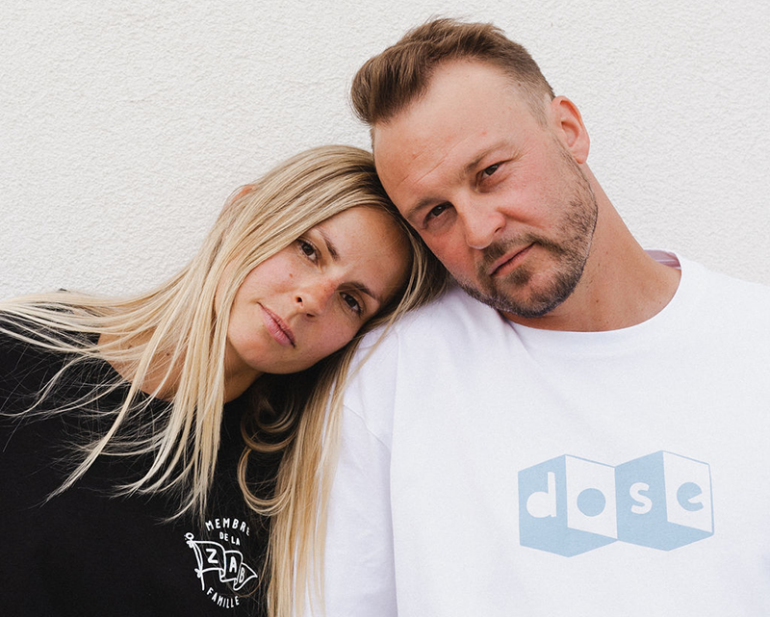
Two Australians Walk into a Canadian Coffee Bar
In 2014, John Pierce and Lauren Webster decided to travel to the Americas.
Not an uncommon occurrence for Australian citizens between the ages of 18 and 35, as Australia and Canada both offer something called a “working holiday visa” to their respective citizens, allowing them to live and work legally in the country for up to twelve months. The visa can be extended for up to 36 months, essentially giving young Canadians and Australians the opportunity to experience life on the other side of the world. It’s even possible to travel without a visa entirely if they receive an electronic travel authority (eTA) due to their position in the British Commonwealth.
The program is quite popular. So much so that it’s not uncommon to run into Australian natives throughout Canada and vice versa. In fact, John and Lauren ended up in Revelstoke precisely because an old school friend of John’s lived in the area.
They had every intention of spending some time with that friend and then using Revelstoke as a jumping point to explore more of the Americas.
Turns out they never left.
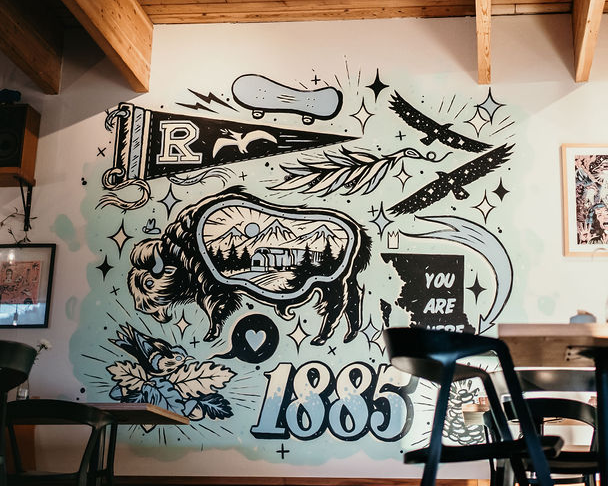
An Epiphany Among the Slopes
Let’s rewind.
When John and Lauren were making travel plans a decade ago, they heard a familiar refrain from all their Australian friends.
“When you say you’re going to Canada and you’re in Australia, everyone’s like, ‘Oh, are you going to Whistler or are you going to Banff?’” John says. Those two locations are extremely popular spots for nature and sport among Australian travelers. Both offer the sweeping, beautiful mountain vistas commonly associated with the far north as well as a range of winter sports, including skiing and snowboarding.
In fact, Whistler boasts one of the largest vertical ski drops in the world. Banff is known for truly stunning national parks and views. However, they didn’t feel quite right. John adds, “Those were the two places we had heard the names of a lot, and I think we yearned for more of an authentic Canadian experience. Don’t get me wrong, those places are majestic and they’re beautiful, but we just wanted something a little bit different.”
That’s how they ended up in Revelstoke. They considered what it would have been like to visit those popular tourist destinations twenty or even fifty years ago, when they were still small but flourishing communities nestled in the mountains.
“There was a bit of a lightbulb moment,” John says. “We could actually be a part of the growth of this town.”
From there, the question became how they could make that happen.

Bringing Australian Coffee Culture to Canada
Once their two-year working holiday visas came due, Lauren and John made the decision to stay. They loved Revelstoke’s little 8000-population community and the friends they’d made. It felt like a place to make into a new home, far from their native Melbourne.
Even so, there were pieces of home they desperately missed. One of those pieces was Australia’s epic coffee and café culture. Revelstoke had cafes, certainly, but none that matched the vibrancy or craft of a typical Aussie coffee house.
In Australia, especially Melbourne, coffee is a way of life. Baristas from the world over travel to the land down under specifically to train in Australian espresso pulls and latte art. The flat white originated there. Starbucks couldn’t get even a slight foothold in the market due to the prevalence of independent coffee shops and the demand for quality cups. Cafes thrive on experimentation and community.
That’s exactly what Lauren and John wanted to bring to Revelstoke.
“People thought we were crazy for opening another café in such a small town,” Lauren says. “But to us, it seemed like a no-brainer because we felt like there was this certain type of café missing.”
Turns out they were exactly right. Dose Coffee opened its café doors in 2016 to resounding success. The pair attribute that success to the local community into which they’d become engrained. John says, “When we first tried to turn this idea into a reality, we had people coming forth with their time, their skills, their tools, a lot of different things we didn’t really have in our wheelhouse.”
They started small, taking the local community’s tastes into account with their initial offerings and expanding the menu slowly while keeping a keen ear for what was working and what wasn’t.
“It was a matter of seeing what our community [wanted], what they enjoyed, to how far we could push that perception of coffee,” John says.
Lauren agrees. “Yeah, it was clear to see on the retail shelves and [in] the feedback that we’d get across the bar what people were enjoying drinking or if we’d taken them too far and had to dial it back. […] At the end of the day, our local community is our number one priority.”
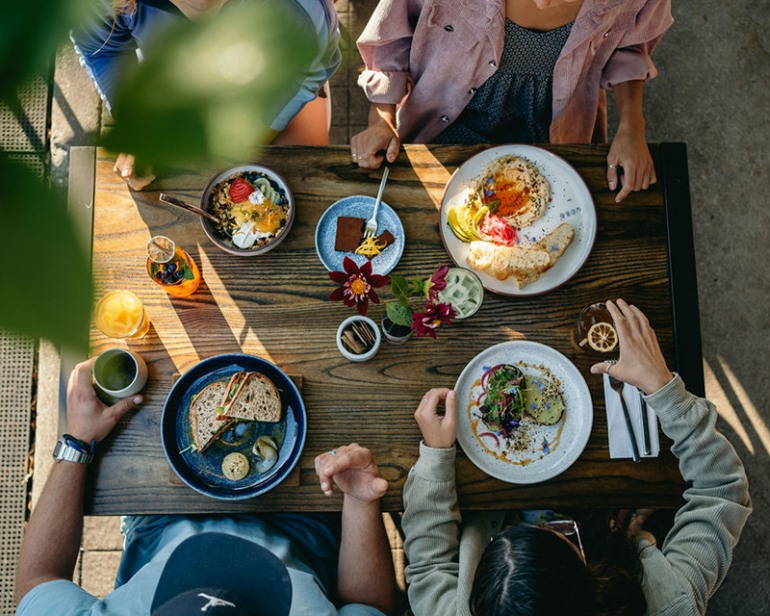
Local Ingredients for Locals to Love
The café’s food offerings follow a similar train of thought. John, who maintains Dose Coffee’s social media presence, routinely posts beautiful food pictures of dishes featuring local ingredients taken by local photographer Madelaine Duff. Their Instagram proudly proclaims, “food is art.” John, who grew up on a farm, especially appreciates the work that people do to literally bring food to the table.
“[Food is] a blank canvas and we can showcase local ingredients, we can showcase small micro-farmers and surrounding producers,” John says. “We try and involve them as much as possible to showcase what they’re doing. It’s a ‘make art on the plate’ kind of a situation.”
The Dose menu was always intended to be a staple for the locals, but in addition it was meant to serve as a space for the local culture to thrive. For locals to stop in for their daily morning cup of coffee and a hearty breakfast while they greet familiar faces and warm up. The café’s offerings are made with quality ingredients, but those quality ingredients are used to make comforting classics like beans on toast, oat milk porridge, egg sandwiches, and much more.
All served alongside signature Aussie-style coffee beverages, of course.
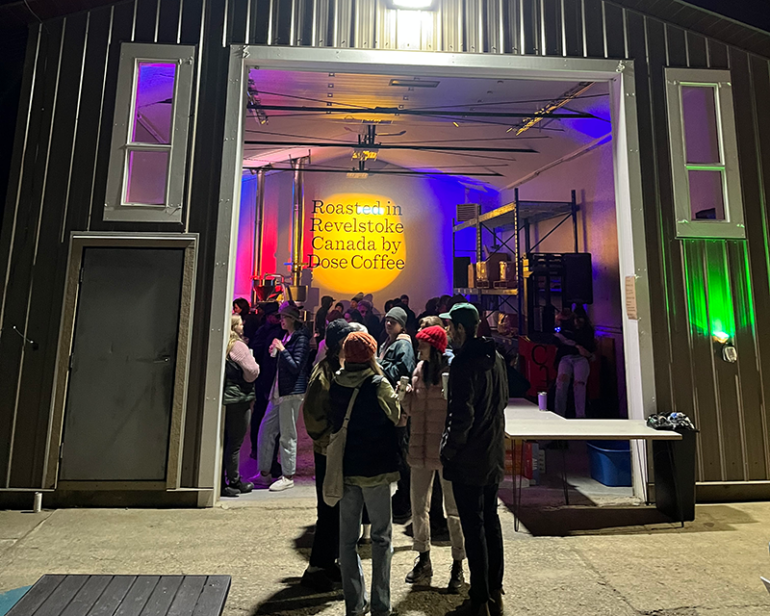
Coffee Houses as Creative Community Hubs
Australia’s coffee history extends back even further. Italian immigrants brought over their early espresso machines, introducing espresso as the preferred method of drinking coffee as early as the 1950s. As part of that migration, immigrants also brought some of Europe’s coffee culture with them.
Historically in the West, coffee houses were common meeting places for creative and innovative minds. Vienna in particular attracted artists like Gustav Klimt and Andy Warhol while European writers like Franz Kafka and T.S. Eliot spent their time writing in cafes. It’s that exact type of culture that sat at the back of John and Lauren’s minds as they founded their own spot.
“We didn’t come from too much when we started our café,” Lauren says. “You don’t need a lot to start, you just need to start. So being able to provide a platform for people to launch their idea or just test it out is kind of a no-brainer, I think.”
While they weren’t necessarily seeking literary greats or avant-garde artists as their core clientele, they wanted to provide a community space that encouraged sharing and creation. From the very start, they felt strongly that sharing their space with other people launching projects of their own was at the heart of their mission. These days, they let local creatives use the roastery warehouse or café space to premier film projects or host launch parties.
“It’s our way of saying ‘thank you,’” John says. “Probably stemmed from that initial point of not having too much to back us except for our family, friends, and our community.”
Lauren nods. “It’s just naturally evolved, and we’ve always been really happy to say yes to things if we’re able to provide a space.”
Naturally, coffee became a large part of the picture because at the end of the day, coffee is about community.
“It’s the people. It’s the connection that coffee brings. It’s that space,” John says. “What we tried to create was a meeting place for the community and for people to share ideas, for people to talk about a few bigger picture kind of things. It’s been really nice to see that evolve over time.”
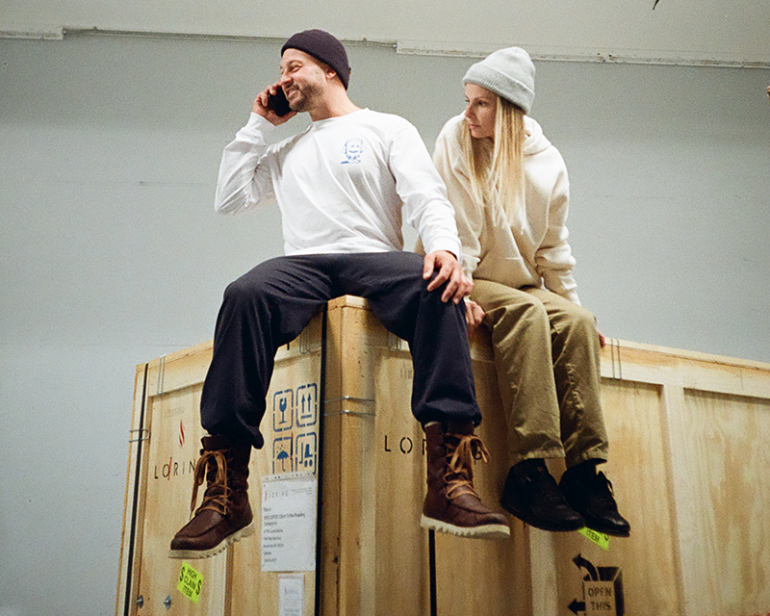
Introducing Specialty Coffee to a Unique Demographic
Revelstoke is an interesting place. It’s a small resort town in southern British Columbia located between Vancouver and Calgary, close to Banff. The demographics are split between blue collar workers and millionaires seeking their own slice of the ski slopes. Tech workers can operate freelance from the area thanks to fiber internet, increasing the level of innovation.
Still, at its heart, Revelstoke is full of locals who love their town and want a place to call home. Introducing specialty coffee to a town already accustomed to their own tastes would be a challenge.
Initially, Dose decided to bring in a roaster called Phil & Sebastian from Calgary for their house coffee. They offered delicious locally roasted coffee without taking Revelstoke locals too far out of their comfort zone. From there, they could gradually expand their offerings with guest roasters to see what worked for their clientele and what was a hard pass.
“It’s a fine line for us to try and balance in between what people are used to and what we could really showcase well,” John says. “We worked with [Phil & Sebastian] for quite some time and once our regulars became more accustomed to their offering, that’s when we decided we wanted to offer them more diversity, and that’s why we went to Monogram for our house roaster.”
John and Lauren always knew they wanted to roast their own coffee eventually, but their startup budget was a lean $30,000 CAD. Incorporating Monogram Coffee allowed them to expand their offering to a more diverse range of coffees and introduce flavors Revelstoke had never tried before. For years, they tested out a coffee program and learned what their regulars liked so they could better serve their market.
Once they had a solid idea of what their regulars wanted out of their new favorite independent café, they decided to make the move toward starting their own coffee roastery. That’s when the fun really began.
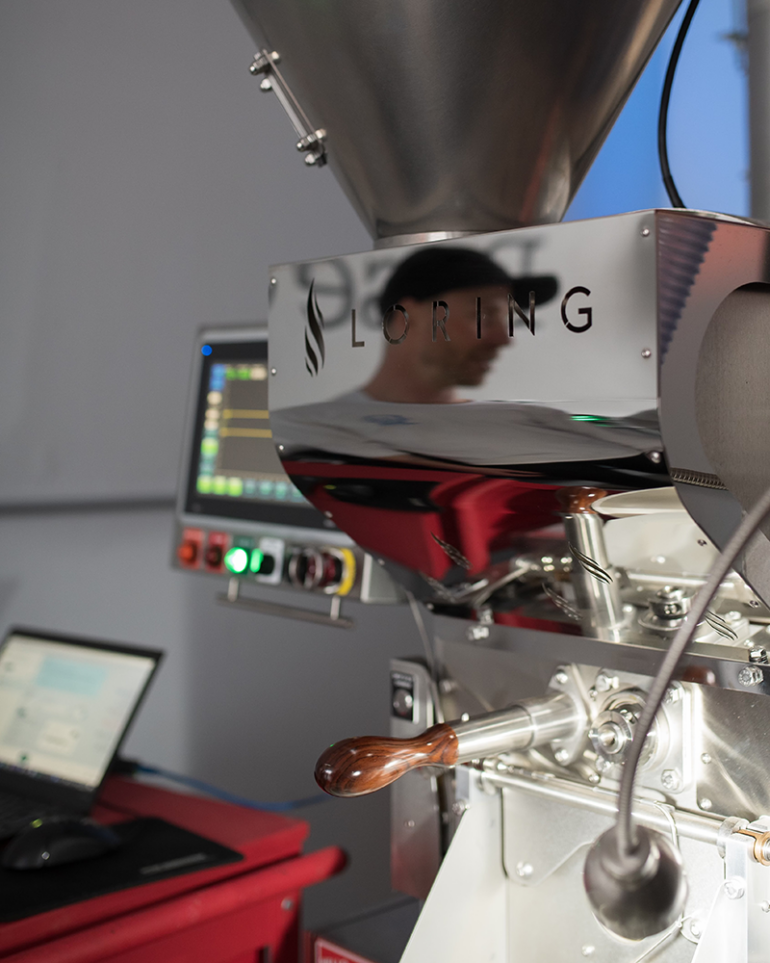
Launching Dose Coffee Roastery
After establishing themselves as a staple hotspot for quality coffee and great food, Dose dove into becoming a roastery with aplomb. A significant amount of research went into choosing their roaster and ultimately they decided on a Loring S15 Falcon – a machine that could both handle a full range of coffee offerings and keep operating costs relatively low. They named her “Rosa” in honor of her birthplace in Santa Rosa, California.
Thankfully John and Lauren had already curated relationships with some truly stellar coffee professionals, including Lemmie Green, a 12-year coffee industry veteran who became their head roaster, and Ady Sluce, the general manager of the café (and Lemmie’s girlfriend, who he wanted to give a shoutout to. This is for you, Ady!).
Lauren glows as she shares their love for their staff. “Both of them have honestly been such an integral part of the team and I think if we didn’t have [Lemmie as] a part of the team right now, we would probably not be able to sit here and do this interview because we would be pretty flat chat. He did such an amazing job.”
Lemmie and the crew spent weeks running test roasts and profile matching in order to create three coffees for Dose’s launch. Their house blend is a love letter to Revelstoke, showcasing their version of the coffees their regulars have grown to love. They also offer a Brazilian natural-process coffee called Cascavel Vermelha (“Red Rattlesnake” in Portuguese) and a decaf made via Swiss Water Process.
At the time of this posting, they’ve also released their very first collaboration blend with Flowt Bikes in support of the Revelstoke Cycling Association. Yet another nod to the local community that built them up to where they are today.
When asked about the Dose approach to roasting, Lemmie says, “I do think that each coffee itself could be considered art and it’s the roaster’s job is to exhibit that art in its purest form, without tarnishing or impacting it with noticeable suggestions of the roast.”
Further, he prefers a very hands-on approach to coffee roasting. Although he calls the automation on the Loring roaster “absurdly impressive,” his personal approach to roasting is fully manual.
“Whilst I wouldn’t say that coffee roasting is an art, I can certainly see the art in coffee roasting,” Lemmie says. “I think delicious coffees can be roasted without much human or artistic influence. Using sterile mathematical and scientific decisions to steer a roast could create immaculate consistency. However, I prefer to ‘feel’ the coffee in real time, at least to an extent, and appreciate its existence as a living organism.”
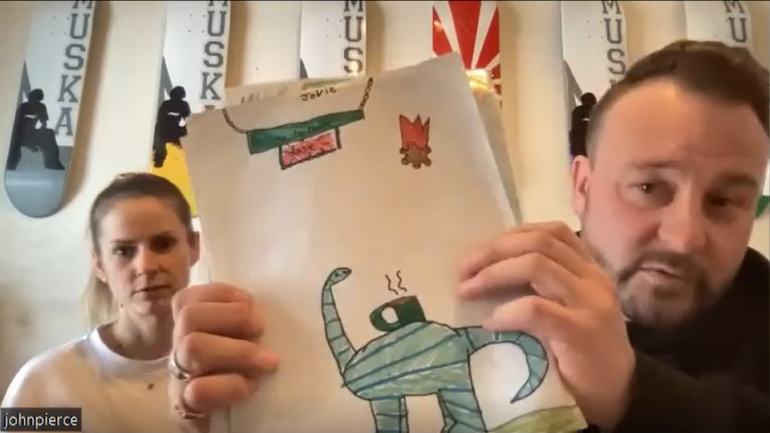
Marrying Coffee, Community, and Art
The journey didn’t end with the decision to roast. All of the relationships Lauren and John fostered over the years would come into play once again as they built their own coffee brand.
Folks familiar with Dose will know that they don’t have an official logo. Instead, that logo shifts and changes with some frequency, always appearing slightly differently on their merchandise or labels. It’s an intentional choice.
“I think ignorance is bliss,” Lauren jokes. “I’m like, what’s brand identity? I don’t know. We’re just going to throw random things out there […] Each time, we kept reinventing ourselves and doing a different design and people would just approach us. Often, they were friends or friends of friends, always local.”
John attributes their brand flexibility to “evolution, and the freedom to evolve.” Dinosaurs made an early appearance in their branding thanks to a design by a tattoo artist friend named Baz. John shows off his pinky ring featuring a tiny pterodactyl named Terry and highlights some of their very first brand designs, also created by Baz.
“I think [the dinosaurs] came from being a little bit childish and not wanting to grow up and not wanting to lose that wonder of the child’s mind or imagination,” he says. That concept follows through on their new coffee labels, with their house blend merging a green dino and a skateboard. It grew organically out of one of their favorite stories of an artist contribution to the brand.
One of John’s favorite logos came from a pair of sisters, aged 7 and 9, who frequented the café with their family ever since it opened in 2016. The sisters would bring in hand drawn dinosaurs every so often because they enjoyed the dinosaurs that made an appearance around the café. John keeps a stack of drawings on his desk.
He shows off a shirt with a childlike version of Dose’s logo comprised of a dino, a donut, a snake, and a cookie monster. “At one stage, I was just like, ‘Do you want to design a t-shirt?’ And they jumped at the opportunity of that.”
That sentiment holds true for their new coffee brand in the form of custom designed sticker labels that go on a minimalistic white bag. True to their roots, they enjoy giving a platform to anyone who wants to contribute to the brand because at their core, they’re about highlighting the community.
They have the platform, they say, and they’re going to use it to lift others up whenever they can.
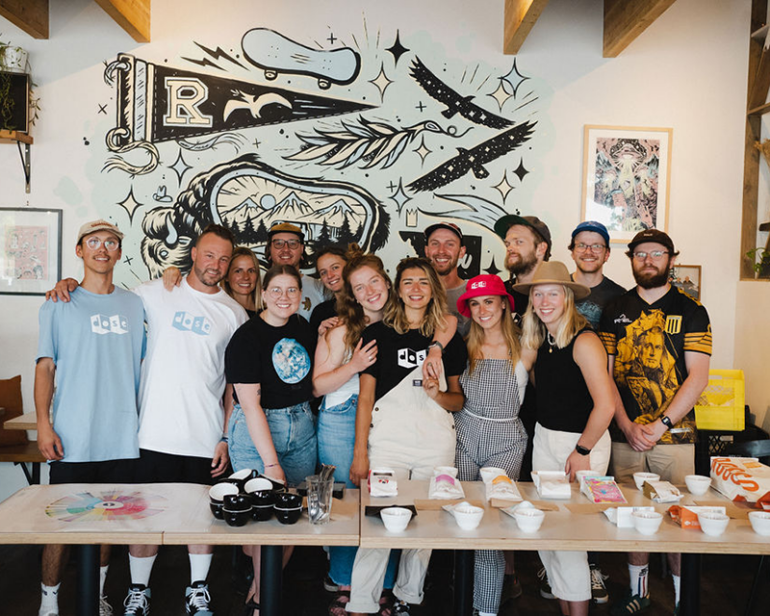
Coffee is About Community
When all is said and done, coffee is the common thread that ties it all together – food, art, culture, friends, family, community.
“For me personally, coffee’s really subjective and people really enjoy the coffee that they like to drink, and we’re not going to try and force anything down anyone’s throat,” John says. “It’s the connection that you can create from coffee with people.”
Lauren adds, “We essentially set out to start a café, but we created a community.”
Head roaster Lemmie chimes in, as well. “Coffee is a catalyst for human interactions. We don’t see it as a necessity to make it through the day. Instead, it’s the best and tastiest excuse to hang out at your favorite spot, bump into your favorite people, and maybe even meet new favorite people!”
It’s important to Dose Coffee to highlight the people who got them where they are today. On a closing note, they’d like to acknowledge their café and roastery teams, as well as all their regulars. They want to give a shoutout to Nic Houel and Brett Mallon for their contributions to both food and art. Baz’s name also comes up for his early Dose logo design.
Last but not least, they want to give a shoutout to Doug Graf of Vintage Coffee Consulting, their dedicated friend and local Loring technician.
“I think it’s a really cool thing that [Loring has] in the initial installation and setup, actually having someone to come out and certify it,” John says. “To give you a lot of the information so if anything does go wrong, you can troubleshoot it. That’s really good work on your behalf. Thanks, guys.”
That’s ultimately the most common refrain among the Dose team. Always, always, “thank you.”